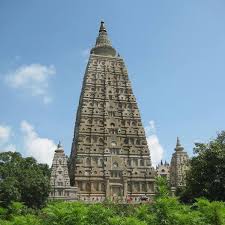Mahabodhi Temple Complex:

A geospatial analysis utilising satellite images and ground surveys has found evidence of the presence of “huge architectural wealth” buried in the Mahabodhi temple complex and its surroundings in Bihar’s Bodh Gaya.
- Mahabodhi Temple Complex is one of the four holy sites related to the life of the Lord Buddha, marking the spot of the Buddha’s Enlightenment (Bodhi).
- It is located in Bodh Gaya, in central Bihar, on the banks of the Niranjana River.
- It is one of India’s few surviving examples of early brick structures.
- The first temple was built by Emperor Ashoka in the 3rd century B.C., and the present temple dates from the 5th or 6th centuries.
- It is one of the earliest Buddhist temples built entirely in brick, still standing from the late Gupta period, and it is considered to have had a significant influence on the development of brick architecture over the centuries.
- The sculpted stone balustrades are an outstanding early example of sculptural reliefs in stone.
- It was recognized as a UNESCO World Heritage Site in 2002.
- The present Temple Complex comprises the 50-meter-high grand Temple, six sacred places within an enclosed area, and a seventh one, the Lotus Pond, just outside the enclosure to the south.
- The most important of the sacred places is the giant Bodhi Tree.
- This tree is to the west of the main temple and is supposed to be a direct descendant of the original Bodhi Tree, under which the Buddha had his enlightenment.
- Ashoka’s stone slab purporting to mark the exact position where the Buddha sat is traditionally called the Buddha’s vajrasana.




